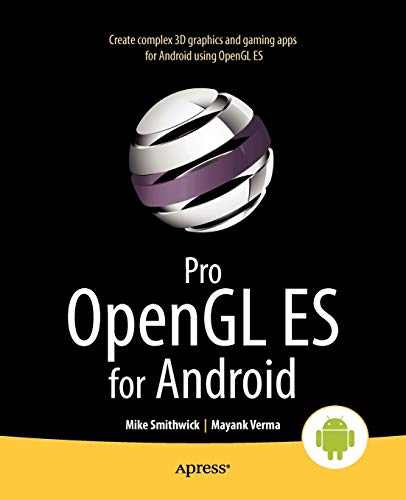All books / Book
Pro OpenGL ES for Android

| Full title: | Pro OpenGL ES for Android |
|---|---|
| ISBN: | 9781430240020 |
| ISBN 10: | 1430240024 |
| Authors: | Smithwick, Mike Verma, Mayank |
| Publisher: | Apress |
| Edition: | 1st ed. |
| Num. pages: | 322 |
| Binding: | Paperback |
| Language: | en |
| Published on: | 2012 |
Read the reviews and/or buy it on Amazon.com
Synopsis
In Pro OpenGL ES for Android, you'll find out how to harness the fullpower of OpenGL ES, and design yourown 3D applications by building a fully-functional 3D solar system model using Open GL ES!
OpenGL has set the standard for 3D computer graphics, and is an essential aspect ofAndroid development. This bookoffers everything you need to know, from basic mathematical conceptstoadvanced coding techniques. You'll learn by building a fascinating 3D solar system simulator!
After introducing Open GL ES, Pro OpenGL ES forAndroid explains the basics of 3D math and thenorients you to the native Android3D libraries you'll be using inyour own 3D games and the solar system project you'll buildusing this book.Through the solar system example project, you'll learn how to incorporate a variety of graphic and animation techniques into your applications. You will also discover howthe full spectrum of 3D development that awaits, with topics such as lighting, texture-mapping, modeling, shaders, blending modes, andseveral moreadvanced concepts.
By the time you finishPro OpenGL ES for Android, you'llhave learned allthe skills you'll need to build your own incredible 3Dapplications, based on one of the most powerful 3Dlibraries available.
What you’ll learn
- The basics of 3D mathematics, and how they are applied in the OpenGL library
- How to design and build your 3D worlds
- To create 2D interfaces within the 3D world
- To develop animation and 3D movement
- How to implement 3D shading, coloring, and texturing
- The differences between OpenGL and other 3D toolkits
- To build a fully-functional 3D solar system simulator using OpenGL ES
ExperiencedAndroid programmers who want to enter the 3D world of OpenGL ES programming.
Table of Contents
- Introduction to OpenGL ES and Our 3D Solar System Project
- Generating a Basic OpenGL Program
- Getting Past the 3D Math
- Shading, Lighting and Colors
- Materials and Textures
- Animation
- Creating a User Interface
- Blending Modes, Buffer Objects, and Other Cool Stuff
- Latest Features of OpenGL ES
- Ray Tracing, Hidden Surfaces, and Other Advanced Topics
Appendix A: APIs